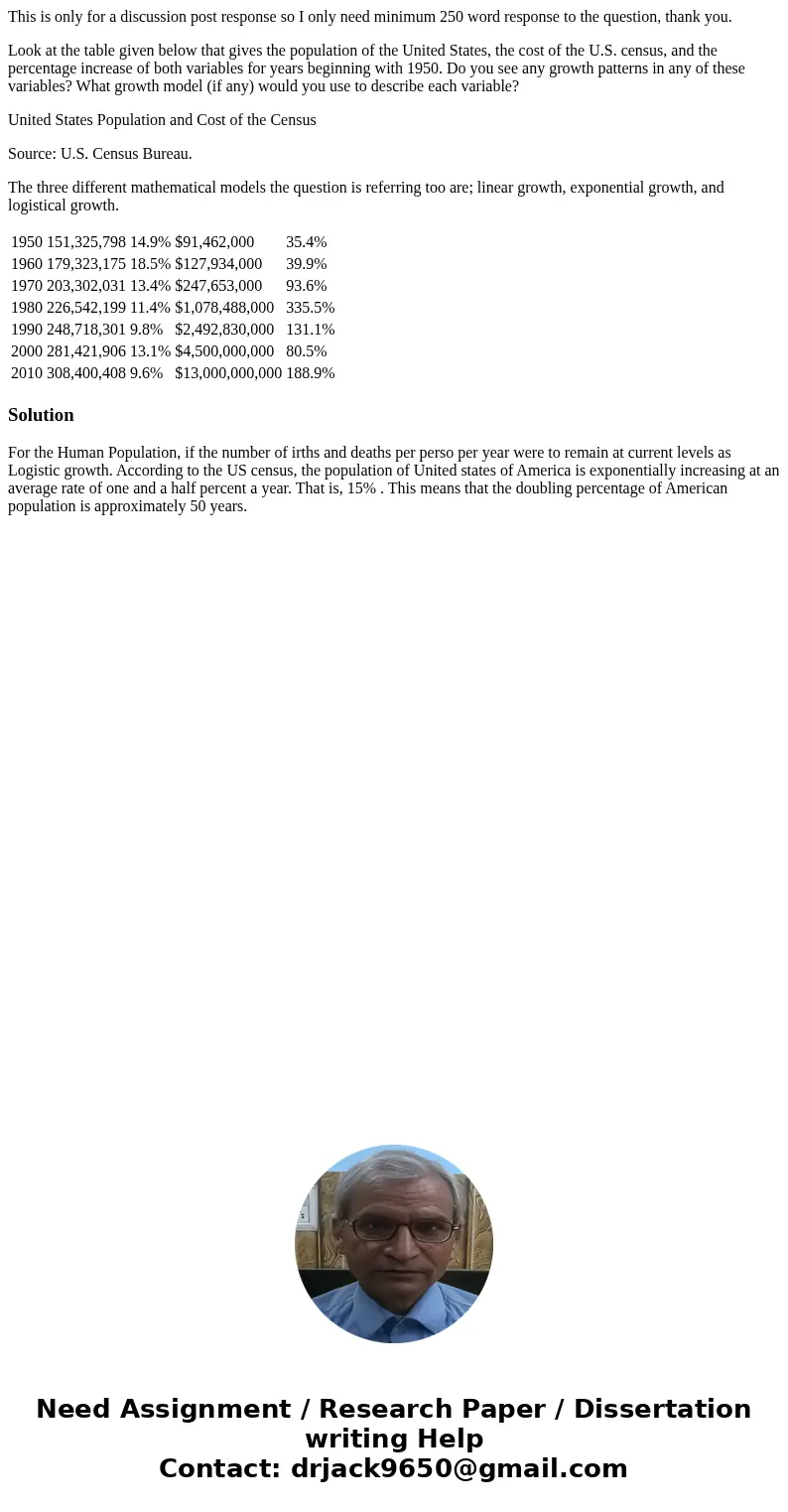This is only for a discussion post response so I only need m
This is only for a discussion post response so I only need minimum 250 word response to the question, thank you.
Look at the table given below that gives the population of the United States, the cost of the U.S. census, and the percentage increase of both variables for years beginning with 1950. Do you see any growth patterns in any of these variables? What growth model (if any) would you use to describe each variable?
United States Population and Cost of the Census
Source: U.S. Census Bureau.
The three different mathematical models the question is referring too are; linear growth, exponential growth, and logistical growth.
| 1950 | 151,325,798 | 14.9% | $91,462,000 | 35.4% |
| 1960 | 179,323,175 | 18.5% | $127,934,000 | 39.9% |
| 1970 | 203,302,031 | 13.4% | $247,653,000 | 93.6% |
| 1980 | 226,542,199 | 11.4% | $1,078,488,000 | 335.5% |
| 1990 | 248,718,301 | 9.8% | $2,492,830,000 | 131.1% |
| 2000 | 281,421,906 | 13.1% | $4,500,000,000 | 80.5% |
| 2010 | 308,400,408 | 9.6% | $13,000,000,000 | 188.9% |
Solution
For the Human Population, if the number of irths and deaths per perso per year were to remain at current levels as Logistic growth. According to the US census, the population of United states of America is exponentially increasing at an average rate of one and a half percent a year. That is, 15% . This means that the doubling percentage of American population is approximately 50 years.

 Homework Sourse
Homework Sourse